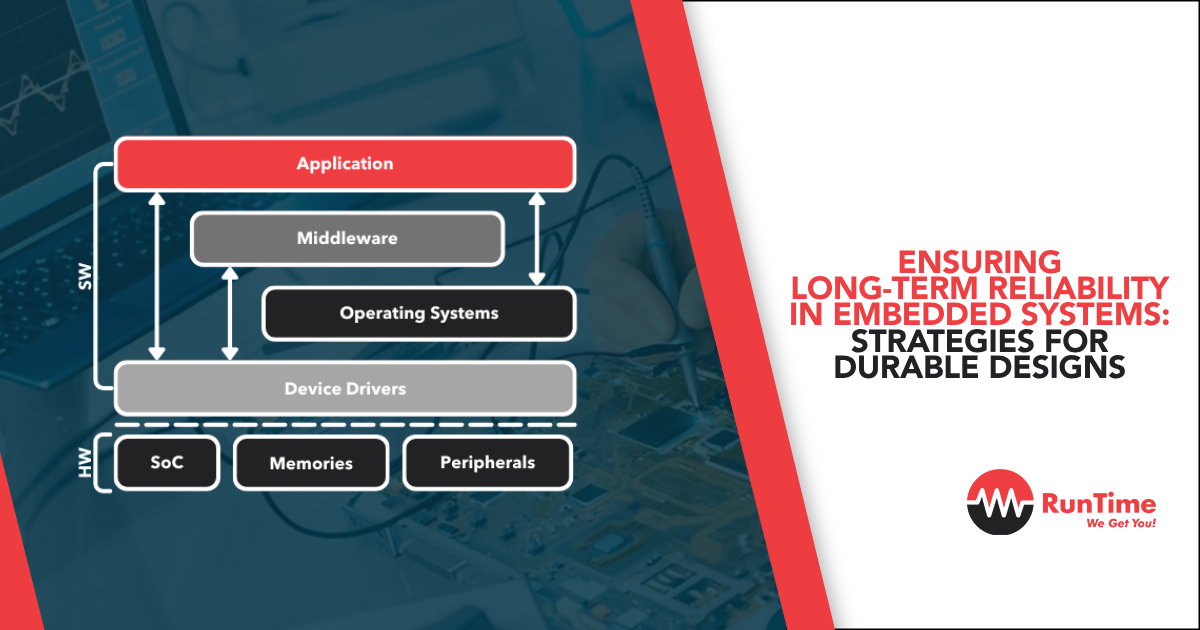Introduction
Embedded systems are integral to the fabric of modern technology, powering everything from household appliances to critical aerospace controls. The reliability of these systems is paramount, as failures can result in financial losses and significant safety risks. Therefore, ensuring the long-term reliability of embedded systems through durable designs is crucial. This article explores various strategies that embedded engineers can employ to enhance the reliability of their designs, ensuring they perform consistently over their intended lifespan.
Understanding the Importance of Reliability in Embedded Systems
Embedded systems are specialized computer systems that perform specific functions within larger mechanical or electrical systems. They are designed to be more compact, consume less power, and perform faster operations than general-purpose computers. Because these systems often operate in critical and sometimes harsh environments, their failure can lead to severe consequences, including operational disruptions and safety hazards. Therefore, enhancing the reliability of these systems is not just beneficial—it’s essential.
Key Challenges to Reliability
- Environmental Stressors: Embedded systems often face extreme conditions such as fluctuating temperatures, humidity, vibration, and electromagnetic interference, all of which can degrade components.
- Hardware Limitations: Constraints like limited computing power, memory, and energy resources can lead to trade-offs between performance and reliability.
- Software Complexity: As functionality increases, so does the complexity of the software, making it prone to bugs and errors that can compromise system reliability.
Strategies for Durable Design
1. Robust Component Selection
- Quality Over Cost: Opt for high-quality components that offer better longevity and are rated for the specific environmental conditions they will face.
- Vendor Reliability: Choose components from reputable vendors known for their commitment to quality and support.
2. Effective System Architecture
- Modularity: Design systems with modular components to isolate faults and facilitate easier upgrades and maintenance.
- Redundancy: Implement redundant systems for critical components to ensure functionality even when one module fails.
3. Advanced Thermal Management
- Heat Dissipation: Utilize heat sinks, cooling fans, or heat pipes to manage the thermal load.
- Thermal Design Software: Leverage software tools to simulate thermal performance and adjust designs accordingly.
4. Rigorous Testing Protocols
- Stress Testing: Subject components and systems to extreme operating conditions to identify potential failure points.
- Lifetime Testing: Simulate extended operating periods to predict and improve component lifespan.
5. Preventive Maintenance
- Regular Inspections: Schedule regular inspections and maintenance to identify and resolve issues before they lead to system failure.
- Software Updates: Regularly update software to patch known bugs and improve system stability.
6. Fault Tolerance Techniques
- Error Detection and Correction: Implement error-checking algorithms to detect and correct data transmission errors.
- Fail-Safe Operations: Design systems to enter a safe state when failures are detected to prevent catastrophic outcomes.
7. Software Quality Assurance
- Code Review: Conduct thorough reviews and static analysis to detect potential vulnerabilities in the code.
- Automated Testing: Employ automated testing frameworks to ensure broad and efficient coverage of potential use cases and scenarios.
8. Environmental Testing
- EMI/EMC Compliance: Test for electromagnetic compatibility and interference to ensure stable operation in varied electromagnetic environments.
- Vibration and Shock Testing: Verify that the system can withstand physical disturbances typical of its operational environment.
Case Studies
- Aerospace Applications: Examination of how redundancy and rigorous testing ensure the reliability of avionics systems.
- Automotive Systems: Discussion on the use of robust component selection and environmental testing in automotive electronics to withstand harsh operating conditions.
- Consumer Electronics: Analysis of preventive maintenance and software updates in prolonging the life of household smart devices.
Future Directions
The future of reliable embedded systems lies in the integration of artificial intelligence and machine learning algorithms, which can predict failures and automate maintenance processes. Moreover, advancements in materials science could lead to the development of components that are inherently more durable and resistant to environmental stressors.
Conclusion
Ensuring the long-term reliability of embedded systems is a multifaceted challenge that requires a strategic approach to design, testing, and maintenance. By employing robust component selection, effective system architecture, advanced thermal management, and rigorous testing protocols, engineers can significantly enhance the durability and reliability of embedded systems. As technology advances, continuous innovation in design strategies and materials will further bolster the resilience of these critical systems, ensuring they meet the demands of tomorrow’s applications.









